Content
- 1 What are the benefits of raising pigs as a business
- 2 Pigs as a business: where to start
- 3 What breed of pigs is profitable to breed for business
- 4 How to keep piglets: preparing the room (pigsty)
- 5 How many heads can you start a business with piglets?
- 6 Where to sell meat products
- 7 Organization of feeding: what and how to feed
- 8 Sample business plan for breeding pigs
- 9 Useful video: keeping pigs
- 10 Useful video: how to make money on pig breeding
- 11 Is it profitable to keep pigs and why
- 12 Pig breeding and fattening business
- 13 How to equip a pigsty
- 14 Room planning
- 15 Conditions of detention
- 16 Pigsty lighting
- 17 Ventilation of the room
- 18 Which breed is better
- 19 How to feed pigs
- 20 How and when to feed
- 21 Features of keeping pigs in winter
- 22 Breeding pigs
- 23 How to care for new born piglets
- 24 Calculating the profitability of pig breeding
In Russia, in the field of agriculture, one of the most profitable business areas is the breeding and raising of pigs. Pig breeding is a rather promising and profitable industry, primarily because there is a constant demand for fresh and high-quality meat.
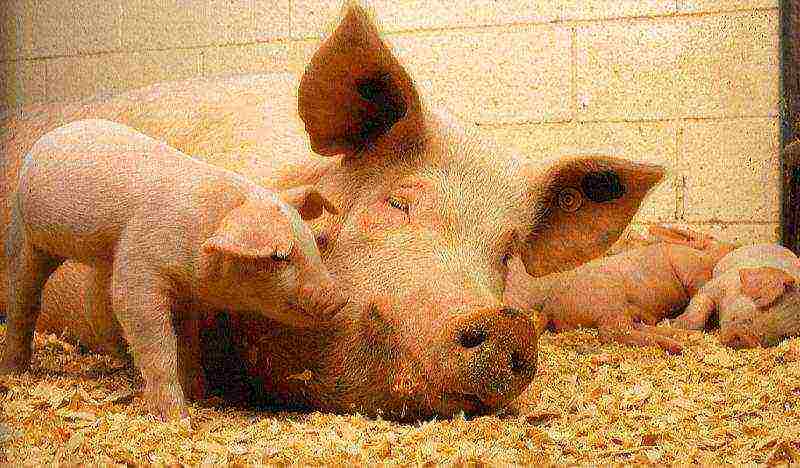
A pig business, like any other, has many nuances, risks and features, so the opinion that you can just buy feed, piglets, equip a pigsty, raise pigs, sell products and get millions without much effort is wrong. However, if you have chosen agriculture, then pig breeding is one of the most optimal options.
In this article, we will consider in detail a number of questions about how to start a pig business, is it profitable or not, how much income you can get and how much you have to invest, how to keep pigs, what breeds are suitable for growing for meat, etc.
What are the benefits of raising pigs as a business
- High meat yield. When slaughtering cattle, the percentage of waste is about 40%, while in a pig this figure is only 15%.
- High fertility. In one farrowing, one sow can bring 12-15 piglets (or even more).
- Short gestation period. The offspring of the sow bears about 3 months, it will take another 1-2 months for feeding, they ask, then they can be taken from the mother and start feeding the pigs.
- High growth rate. A week after birth, a piglet can gain from 1.5 kg to 2.3-3 kg in weight. By 6 months, the pig reaches 100 kg and already at this age it can be slaughtered.
- Easy to care for. Piglets do not need special housing conditions. It is only necessary to provide them with a dry, warm barn and the correct feeding ration.
Pigs as a business: where to start
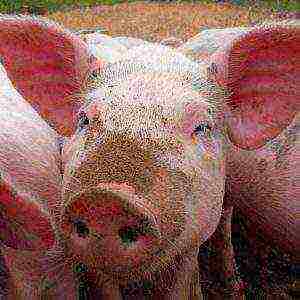 In rural areas, the breeding and rearing of piglets is widespread. But mostly pigs are raised and kept for themselves, or a small number of heads are sold to local buyers. Many people think about starting piglet breeding as a business, but only a few are implementing it. Although, with the right approach, pork production can be a good source of income.
In rural areas, the breeding and rearing of piglets is widespread. But mostly pigs are raised and kept for themselves, or a small number of heads are sold to local buyers. Many people think about starting piglet breeding as a business, but only a few are implementing it. Although, with the right approach, pork production can be a good source of income.
Another point is the volume of financial investments. It is this factor that prevents the villager from starting to fully earn money on pigs. After all, raising animals at home in small quantities practically does not bring profit, and sometimes it even becomes unprofitable. The reason for this may be high feed prices, lack of experience or the possibility of proper maintenance.
If you have the necessary amount and a strong desire to build a profitable pig raising business as a business, then you just have to start.
But not only those who have "round sums" can start receiving income from the sale of meat products or piglets. You can start from any private backyard, at home, in a small shed or mini farm. The main thing is to have the desire and constantly increase the livestock.
It is quite possible to start from scratch by purchasing 10-20 heads, gradually expanding the farm. By raising piglets, you can earn income from the sale of:
- Meat;
- Sala;
- Young animals (from the age of one month, piglets can be sold);
- Skins.
An additional source of profit can be a smokehouse - smoked pork and lard are in great demand and the cost of such products is much higher.
For a successful start, you will have to find a room and equip it with equipment, purchase piglets, feed, organize a continuous work process, find points of sale, etc. More on all this below.
What breed of pigs is profitable to breed for business
Many breeds have been bred these days, each of which is grown to obtain 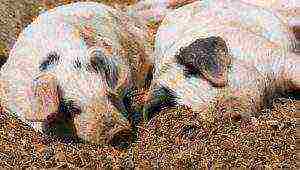 a certain result and is suitable for breeding in a particular region. The breeds are classified into:
a certain result and is suitable for breeding in a particular region. The breeds are classified into:
- Meat and lard (universal). These include Hampshire, Duroc, Large White;
- Bacon (or just meat). Temvros, Landrace, etc .;
- Greasy. Berkshire, Mangalitskaya, black large, etc.
The following breeds of pigs are widely spread in Russia and the post-Soviet space:
- Landrace;
- Duroc;
- Urzhumskys;
- Hampshire;
- Pockmarked and white steppe Ukrainian;
- North Siberian;
- Muromskaya.
But the most popular breed is perhaps large white... It is she who can be attributed to the most profitable pig breeds for business in Russia.
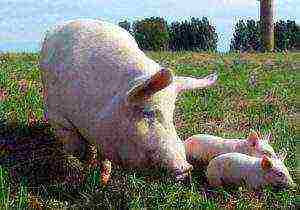 Large white belongs to the universal group of pigs. Most farmers choose this breed for breeding. And this is not in vain, because already at the age of 12 months, a wild boar can weigh about 350 kg, and the weight of a sow can reach 250 kg. But this is not the limit - with a special diet, wild boars of this breed can weigh up to 500 kg after 1 year of life.
Large white belongs to the universal group of pigs. Most farmers choose this breed for breeding. And this is not in vain, because already at the age of 12 months, a wild boar can weigh about 350 kg, and the weight of a sow can reach 250 kg. But this is not the limit - with a special diet, wild boars of this breed can weigh up to 500 kg after 1 year of life.
Another reason for the popularity of this breed is its high fertility. One sow per farrowing can bring 10-15 piglets, each weighing 1-1.2 kg. By 5-6 months, with proper care and feeding, pigs can easily reach a weight of about 100 kg.
In general, if you do not know which breed to choose for breeding, then we recommend the large white one. It is successfully bred by farmers in various regions of Russia, and these pigs have received numerous positive reviews from the owners.
How to keep piglets: preparing the room (pigsty)
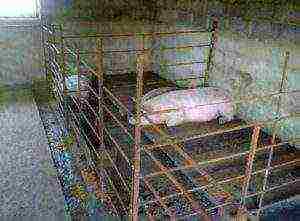 Raising a small number of pigs at home on a private backyard does not imply the construction of some kind of capital structure equipped with special equipment. After all, 2-3 heads are kept until slaughter (the beginning of winter).
Raising a small number of pigs at home on a private backyard does not imply the construction of some kind of capital structure equipped with special equipment. After all, 2-3 heads are kept until slaughter (the beginning of winter).
With a serious approach to the pig business, the livestock is already more significant - about 200-300 individuals. It is with this amount that farmers recommend starting their own business. In this case, a capital pigsty is required, which can be built from scratch or rented. But whatever the livestock, the premises for it must meet a number of requirements.
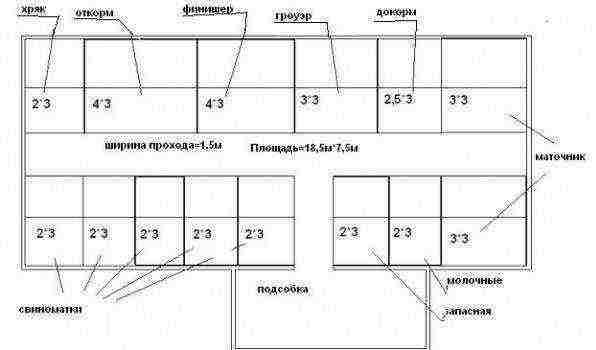 Pigsty project
Pigsty project
What conditions must be met when arranging a pigsty
- Good ventilation.
- Stable air temperature - optimally 18-20 degrees, but not lower than 11 degrees Celsius.
- No drafts! Fill up all the cracks.
- Optimal illumination level. Light affects the general condition of animals, weight gain, appetite, fertility. Therefore, it is necessary to provide the room with both artificial and natural lighting.
- The floors in the pen should be solid, preferably wooden planks. A slight slope is required.
- It is recommended to disinfect the ceiling and walls with lime wash.It needs to be updated periodically.
Required area of the pigsty
Before you start building a building, you should consider the livestock that you will 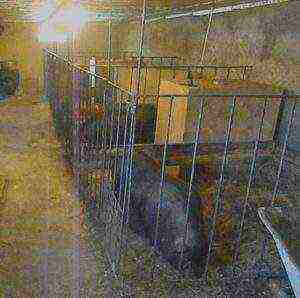 contain and the possibility of expanding the structure. For one pig that is fattening, a minimum of 3 square meters of area is required. A sow will need about 5 square meters. Thus, to contain 50 heads, a pigsty with an area of 300 square meters will be needed. You should also take into account the aisles, walking pens, inventory rooms, etc. The optimal height of the pigsty is 2.5 meters or more.
contain and the possibility of expanding the structure. For one pig that is fattening, a minimum of 3 square meters of area is required. A sow will need about 5 square meters. Thus, to contain 50 heads, a pigsty with an area of 300 square meters will be needed. You should also take into account the aisles, walking pens, inventory rooms, etc. The optimal height of the pigsty is 2.5 meters or more.
What equipment is required
The main equipment is feeding systems. If the herd is large, it is better to give preference to automatic feeding. The choice of type depends on the feeding method, which can be liquid or dry. The easiest and cheapest option is dry feeding equipment.
Also in the pigsty you will need:
- Drinking bowls;
- Care inventory;
- Special lamps that are used to heat newborn piglets.
How many heads can you start a business with piglets?
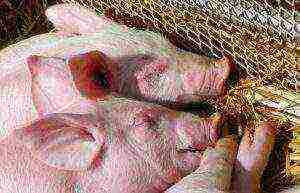 Many novice farmers are primarily interested in this question. But no one will answer you for sure. After all, it all depends on the capabilities and volume of financial investments. You can start from scratch with a couple of dozen pigs, gradually expanding the farm.
Many novice farmers are primarily interested in this question. But no one will answer you for sure. After all, it all depends on the capabilities and volume of financial investments. You can start from scratch with a couple of dozen pigs, gradually expanding the farm.
According to the experience of many farmers, the optimal livestock from which to start a pig business is 300-400 individuals. Here you should also take into account the next point - product sales. It is this question that needs to be studied before starting to purchase piglets.
An important point! Females and males should be purchased from different nurseries or farms. This will avoid family ties and possible genetic mutations.
Where to sell meat products
At first glance, the question is rather ridiculous. After all, even at a glance, you can cite as an example 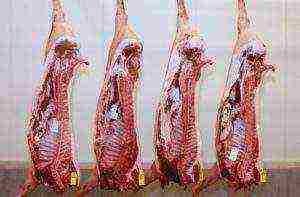 places such as markets, fairs, meat processing plants, etc. You can also add restaurants, canteens, your own stalls, shops and, finally, individuals and meat buyers.
places such as markets, fairs, meat processing plants, etc. You can also add restaurants, canteens, your own stalls, shops and, finally, individuals and meat buyers.
Each item requires an individual approach. You can use local newspaper ads, social media and more. The marketing issue should be studied especially carefully.
Organization of feeding: what and how to feed
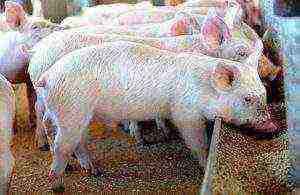 A balanced feeding ration is the key to successful pig breeding as a business. Feed affects the rate of weight gain, animal health, and the quality of finished products. In general, three types of feed can be distinguished, each of which leads to one or another result:
A balanced feeding ration is the key to successful pig breeding as a business. Feed affects the rate of weight gain, animal health, and the quality of finished products. In general, three types of feed can be distinguished, each of which leads to one or another result:
- Common and affordable. These are potatoes, buckwheat, wheat bran, corn.
- Mixed feed. Various types of herbs as well as whey.
- Feed for high quality pork. These are cereals (barley, wheat, rye), as well as legumes and some root crops (beets, carrots).
The food from the latter category is the most preferred, but at the same time the most expensive. The second category is less effective, it is better to mix it in equal proportions with the third. Small amounts can be added to the main ration of feed from the first category, since they negatively affect the taste of meat and should be excluded 1-2 months before slaughter.
Important! The question of proper feeding should be studied especially carefully, because, for example, the diet of a fattening boar and a sow is different. There is a lot of information, on the net you can find both instructions and advice from experienced farmers.
Sample business plan for breeding pigs
Any successful business is a well-thought-out, well-thought-out scheme of work, a project that takes into account all costs, profits, expected losses, risks, etc. Pig breeding is no exception, and in order to get an approximate picture of what can be obtained in our head, we will make some calculations.
The data below is approximate, costs and revenues may vary from region to region, cost of feed, young animals, etc.Nevertheless, they will help in the future to develop their own, more accurate business plan for fattening pigs for meat.
Expenses
Let's say we decided to start breeding pigs with 130 heads. We will need a pigsty with an area of about 800 square meters. About 1-1.5 million rubles will have to be invested in the construction of such a building from scratch. Rent will cost about 150 rubles per 1 m2 (about 120 thousand per year).
- Costs for water supply and electricity - about 20 thousand rubles per month;
- Costs for a veterinarian (you can't do without him). Usually one-time and he will have to pay about 20 thousand rubles a year.
- Staff salaries. We need a livestock technician, pig breeders - about 4 people for such a livestock (the average salary for such workers in the village is about 15-20 thousand rubles a month). For other work, you will need a handyman (salary about 10-15 thousand).
- Purchase of young animals. The average purchase price of one pig at the age of two months is 2.5 thousand rubles. To purchase 130 heads, you will need to invest 325 thousand rubles.
- Purchase of feed. Effective feeding of piglets for meat is based on compound feed and grain additives. One pig consumes about 280 kg of feed per year. It turns out that for the entire livestock a year, 36 400 kg of feed will be required, which in money will amount to about 290 thousand rubles. (with an average cost of one kilogram of 8 rubles).
Income
If everything went well and at the costs listed above, the pigs are gaining weight steadily, then at 6 months of age they can already weigh 100 kg. The average cost of one kilogram of pork is 250 rubles. From 120-125 heads (you need to leave a few pigs for breeding) in six months we will receive about 3.2 million rubles. From this amount, we deduct the costs of about 1.4-1.5 million rubles. We get a profit of 1.6-1.8 million rubles in six months, or about 300 thousand rubles a month.
Once again, we note that all the calculations are approximate, but nevertheless they give an idea that pig breeding is a rather profitable business in the field of agriculture and it can be started with a small financial investment. I wish you success in all your endeavors!
Useful video: keeping pigs
Useful video: how to make money on pig breeding
The date:
2017-04-24
Read:
2154 time (s)
A good farmer has always been one who can raise and care for livestock on his own. Pigs are one of the most popular domestic animals. Pig breeding as a household cat business today is profitable because it has a number of advantages over other animals.
In Russia and Ukraine, pig breeding as a commerce has been flourishing for many decades, and at home as well. Of course, primarily due to the demand for homemade meat and lard, as well as sausages and other meat products. They are much higher in quality than those on store shelves. And their taste characteristics are much better. And the ingredients can be literally tasted without fear of unknown additives.
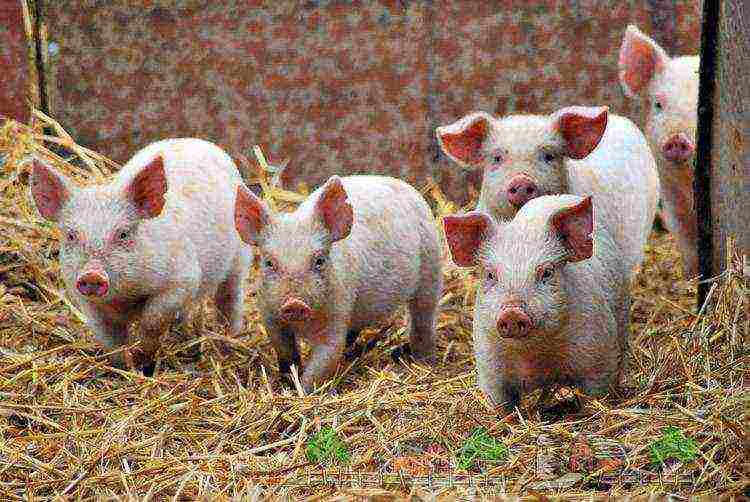
However, is it profitable to raise piglets and pigs within a farm household? It's no secret that you need to work hard and regularly, then your business will flourish. If you are still wondering whether to keep pigs and piglets at home, or to do something else, our article will help you make a decision.
If you come to the question of starting a farm from scratch, five essential components are required. Land for the construction of farm buildings and a pigsty, the building itself, animals for the formation of a herd, a fodder base and a technical base. Financial expenses are not indicated in this list, since they are mandatory; without them, the five indicated points cannot be advantageously combined to obtain a farm.

The first and one of the most important points of creating a pig farm is an area for building a pigsty and creating a walking area. For example, a livestock of 10 individuals will need at least ten acres of land (walking area).For the same 10 pigs, at least 25 square meters of premises will be required (only taking into account the pens), plus space for a vestibule, a corridor and a pantry or other room for storing inventory. The best option is a barn, which is being built next to the pigsty.
In total, the average area of a pigsty with pens, a corridor and a vestibule is 35 sq. meters, barn - about 8 sq. meters, walking area - 100 sq. meters. On average, 10 pigs will need 143 sq. meters. As the number of pigs increases, the area of the pigsty can be expanded. It is quite profitable to consider a lease option, especially at the initial stages of the formation of a farm.
The actual rearing of piglets should take place in comfortable conditions, as well as the keeping of adult pigs. The best pigsty is brick-built, with a concrete floor, a tiled roof, and wood or plywood overlays on the walls. One pig accounts for about 2 square meters. meters, one pen can hold up to 5 boars and up to 12 sows. The sow with cubs must be kept in a separate pen.
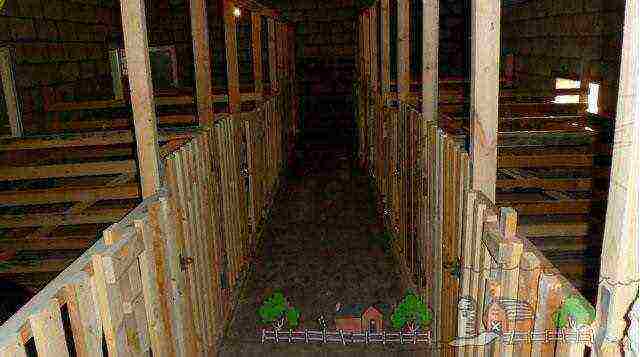
Note that if there is such an opportunity, even at home it is better to keep each individual separately. Animals can contact each other while walking, but separate keeping will protect from fights, uncontrolled mating and trampling of piglets. Group housing sections allow for the simultaneous presence of 25 heads, however, in our case, with a small number of herds, group pens are not needed.
Raising large livestock immediately is definitely not profitable. It is necessary to see how many piglets you can keep without much expense and with a rational use of time. Usually they buy six to seven gilts and two pigs, forming a herd of up to 10 individuals. As the pigs grow older, they determine which line of business is closer: the sale of high-quality breeding pigs or breeding "for meat", or maybe both. Pig farming is not rushed, so take your time to buy a lot of piglets.
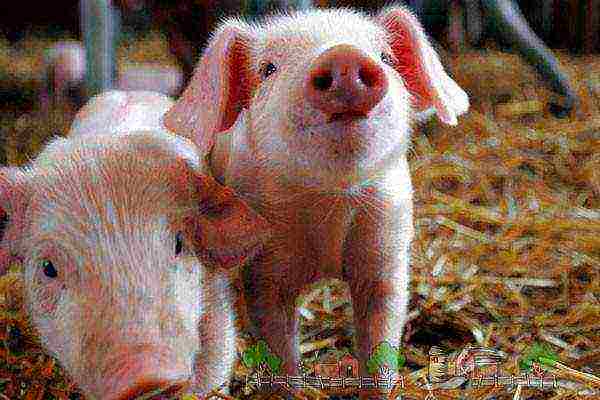
There are two options: growing forage crops on your land, or purchasing feed in bulk from a supplier. The first is quite beneficial if the herd is large, and the second is suitable when you want to keep a small herd. Piglets should be kept on such types of food: root crops, vegetables, hay, fruits, cereals, as well as protein feed (for omnivorous breeds). But, for example, animal feed is not suitable for feeding pot-bellied piglets, since this breed is herbivorous.
Another auxiliary, but sometimes so necessary resource is technology. When raising pigs is aimed at medium to large scale, it is beneficial to have a tractor with a trailer, as well as various electric mowers for hay and fresh grass in the summer. Depending on the scale of your domestic pig production, the amount of equipment may fluctuate. By the way, it is not necessary to buy equipment, you can also rent it.
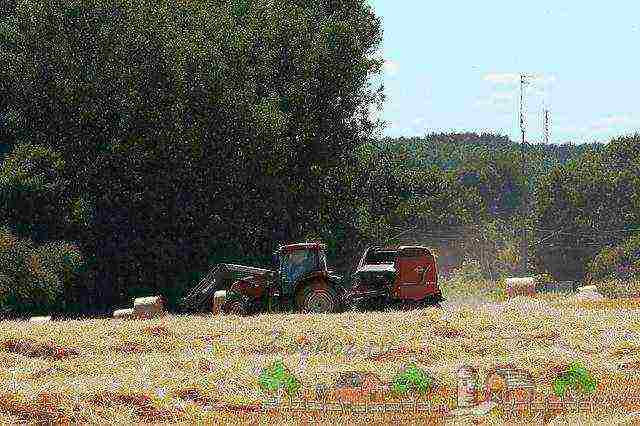
Any small or medium business focused on raising and selling animals needs help. Sometimes it's easier to hire a few people to help than to spend all your energy trying to cope yourself. If you plan to keep more than 100 pigs, it will not always be possible to manage the forces of one family. Required specialists: janitor, cleaner, tractor driver, livestock technician (in the case when breeding and selection of pigs is planned).
Should take into account all the main points of the production of meat products, the keeping of piglets and the breeding of adult pigs. So, for a home pig farm of 10 heads, if you have your own premises and a walking area, you will need:
- 10 piglets (2 hogs and 8 pigs, for one individual from 6 to 14 thousand rubles, a total of 60 thousand rubles at least);
- feed of various types (for one individual for the entire feeding period of 28 weeks, about 400 kg of compound feed is consumed, for ten heads 4000 kg of compound feed will be required - 1 ton costs about 7000 rubles, a total of 28000 rubles);
- pigsty equipment (drinkers, feeders, lamps - from 25 thousand rubles and more)
- inventory (for cleaning, cleaning the pigsty, garbage disposal - about 15 thousand rubles)
- equipment (tractor rental from 400 rubles per hour, and from 6800 per work shift, multiply by the number of work shifts).
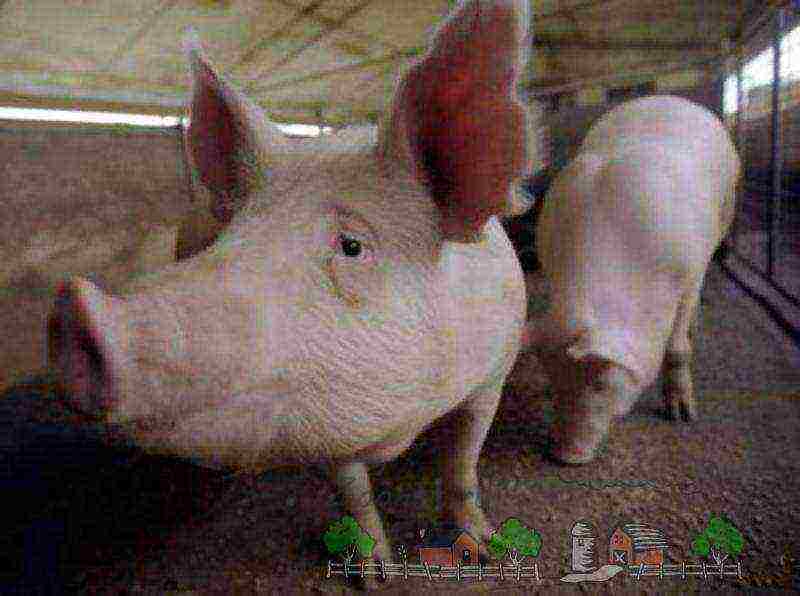
On average, the most necessary things will require from 150 to 250 thousand rubles or more. The financial side of domestic pig breeding, as we can see, should be studied first. Our calculations are approximate and are intended to give an idea of average costs. However, each farm is individual, as are its capabilities. Hard work can make a good, and most importantly, stable income on pigs, but you will have to spend more than one month in worries and rather troublesome work.
According to the standards, with one carcass weighing 120 kg, the slaughter yield will be about 75%, which corresponds to 90 kg of meat. This means that when it is sold at an average price of 250-300 rubles per kg, you will receive about 23-27 thousand rubles.
The business is quite difficult, at the start it requires maximum effort, investment and time. Each breed has its own subtleties, for example, pot-bellied pigs are loved for the quality of lard and meat, as well as for their friendly disposition and small size. But their cost also ranges from 5 thousand rubles per head. Domestic pig breeding implies the presence of areas for walking, as well as facilities for animals. If you have the resources available, then the matter is small - to buy a pig.
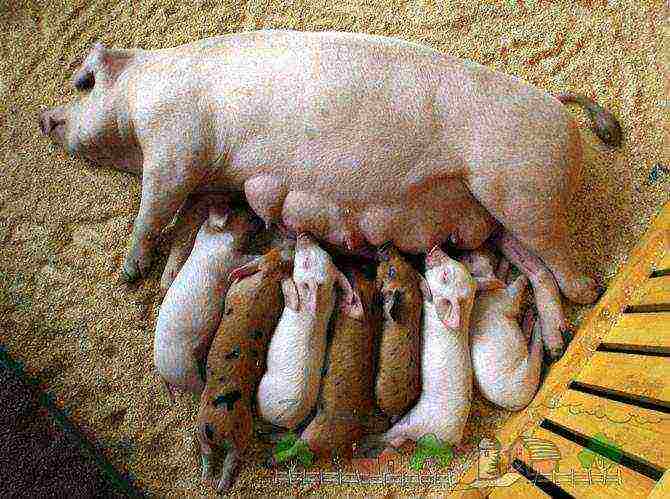
So, if you bought piglets for your pig farm in the market or from breeders, what next? The first step is intensive feeding. It starts from 1.5-3 months and lasts up to about 8 months. Just before the time when the queens can be mated to the wild boar. One piglet with an average weight of 10 kg will need almost 400 kg of concentrate to fatten it up to 120 kg. Pigs gain muscle tissue for up to 7-8 months, so do not spare food for them and regularly give vitamin supplements (for example, calcium, tricalcium phosphate).
It is necessary to keep pigs and piglets in insulated pigsties, in winter the temperature in them should not be lower than 20 degrees. On the popular today, pot-bellied pigs will need about 2 square meters per head, on white - a little more, up to 2.5 meters. Boars are kept in pens for a maximum of 5 heads, and better - individually. Domestic pig breeding will show a profit within a year after the purchase of piglets, if they are properly fed and cared for.

From an economic point of view, it is more profitable to fatten pigs to the maximum so that they gain weight over 100 kg (depending on the breed). Then the meat yield will be greater. Over time, you can increase the number of piglets, leaving piglets from the litter. Remember that as the number of livestock increases, the area of the pigsty needs to be expanded.
A plot about the device of a pig farm at home with comments from the owner. The peculiarity of the farm is the use of EM (effective microorganisms) for the disposal of animal waste with the release of heat.
> We are building a pigsty for twenty pigs
Vietnamese pigs - an idea for a home business
Construction of a quality pigsty for 100 pigs
Share information on social networks:
Do you need a consultation?
- Costs and incomes for laying hens
- Diet of meat chickens
- Diet of productive geese
- Diet of breeding turkeys
- Guinea fowl diet
- Quail diet
- Pheasant diet for meat
- Income from the sale of eggs
- Okrola rabbit
- Farrowing sow
- Sheep lamb
- Calving a cow
- Mare's foal
- Goat lamb

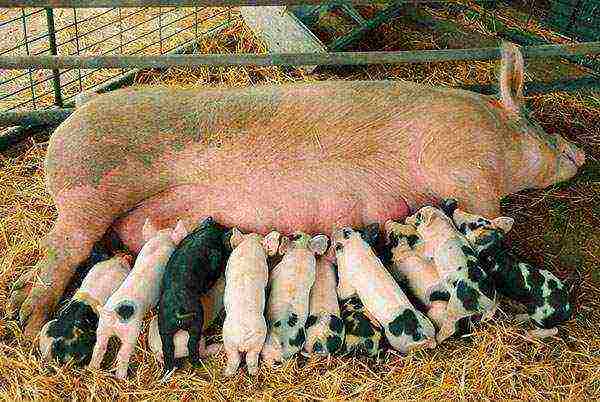 The peasant farm provides the family with food products of plant and animal origin. Pig farming is beneficial for many reasons. Obtaining meat after short-term fattening, disposal of food residues, summer keeping with grazing makes pork a cheap and affordable product.
The peasant farm provides the family with food products of plant and animal origin. Pig farming is beneficial for many reasons. Obtaining meat after short-term fattening, disposal of food residues, summer keeping with grazing makes pork a cheap and affordable product.
Is it profitable to keep pigs and why
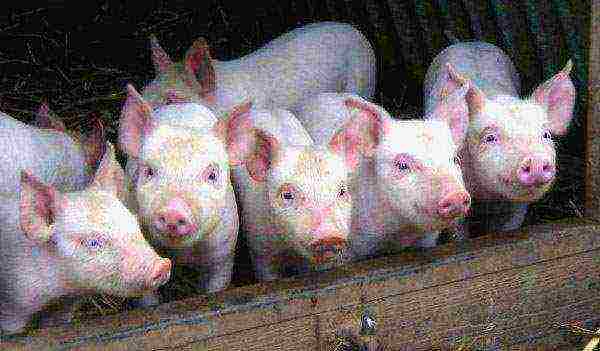 Pork production is beneficial for both the family and business development.In any economic situation, there will be a piece of meat on the table. With a small investment, you can start a pig breeding business on your own backyard. A unique animal will provide a stable income both when raising livestock for meat, and when keeping sows to sell offspring.
Pork production is beneficial for both the family and business development.In any economic situation, there will be a piece of meat on the table. With a small investment, you can start a pig breeding business on your own backyard. A unique animal will provide a stable income both when raising livestock for meat, and when keeping sows to sell offspring.
Objective data on the effectiveness of pig keeping:
- a rapid increase in the marketable weight, for a year of keeping the live weight of a newborn piglet increases 140 times;
- carcass weight compared to live weight is 85%, while in cattle it is 50-60%;
- for farrowing, the uterus brings up to 14 piglets, depending on the breed, each of which will bring $ 100-200 in a month;
- pigs assimilate up to 30% of the composition of the feed, in other domestic animals this figure does not exceed 20%.
 The correct choice of breed and small investment will allow beginners to breed pigs at home to create a successful business. To meet the family's need for meat and lard, it is enough to buy two piglets in early spring. Toddlers don't need a lot of storage space. In the summer, animals grow rapidly. With the onset of autumn, there are many plant residues in the courtyard, which are a good forage base. For intensive feeding of pigs for two months before slaughter, it will be necessary to increase the consumption of protein feed. Aside from the labor of caring for the pigs, a year's supply of pork is cheap. You don't need a warm pigsty. But there are requirements for fattening pigs that must be met.
The correct choice of breed and small investment will allow beginners to breed pigs at home to create a successful business. To meet the family's need for meat and lard, it is enough to buy two piglets in early spring. Toddlers don't need a lot of storage space. In the summer, animals grow rapidly. With the onset of autumn, there are many plant residues in the courtyard, which are a good forage base. For intensive feeding of pigs for two months before slaughter, it will be necessary to increase the consumption of protein feed. Aside from the labor of caring for the pigs, a year's supply of pork is cheap. You don't need a warm pigsty. But there are requirements for fattening pigs that must be met.
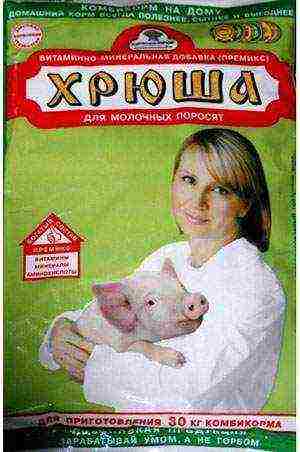 Keeping pigs at home requires proper nutritional choices. So a baby at the age of a month needs:
Keeping pigs at home requires proper nutritional choices. So a baby at the age of a month needs:
- the predominance of dairy products and cereals based on milk or its substitutes;
- the use of special premixes for piglets containing special sets of vitamins and antibiotics, so that the babies grow up healthy;
- maintain a feeding frequency appropriate for the age and stomach size of the piglet.
When fattening a piglet from 2 to 4 months, do not include raw potatoes in the diet, only mashed potatoes or a jerk. Root vegetables are best served boiled and chopped. It is more useful to feed carrots raw grated, the grass should be finely chopped and boiled with boiling water.
After slaughter, the pig carcass is treated with a blowtorch to remove the bristles. A high pressure washer will help wash off the carbon deposits. A compact car wash is available from car owners. The use of this processing method increases the presentation of the product.
Pig breeding and fattening business
 Any business requires planning. A pig breeding business plan should include an expenditure and revenue side. Pig breeding is profitable only if the requirements for the conditions of keeping and feeding the animals are met.
Any business requires planning. A pig breeding business plan should include an expenditure and revenue side. Pig breeding is profitable only if the requirements for the conditions of keeping and feeding the animals are met.
Therefore, the main item in the cost estimate is the construction of a pigsty based on an area of 4 sq. m per feed unit and 6 squares per sow. The room should include a den, a walking area and a canopy from the sun. A bathhouse should be provided for the pigs. If feeding is done in a shared trough, there should be enough room for each animal to approach.
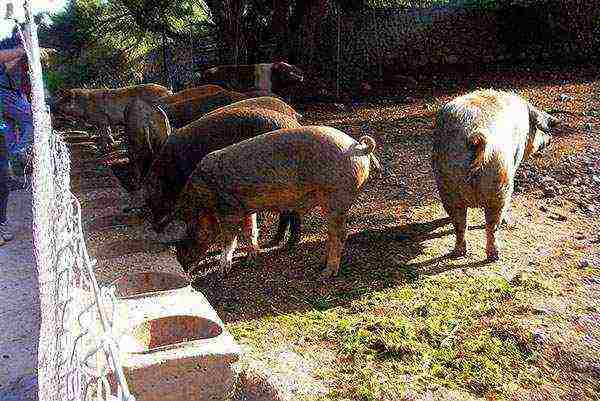 The stable must be strong so that the pig does not go into the wild as a result of the digging. Provide in the pigsty:
The stable must be strong so that the pig does not go into the wild as a result of the digging. Provide in the pigsty:
- roof, excluding leakage;
- natural and combined lighting;
- capital walls, excluding freezing;
- floor with waste gutters and clean, dry underlay;
- ventilation of the room.
When placed, there should be a walking area, on which pigs spend most of their time in the summer. In the open air, muscle gain is faster, animals get sick less.
 The expenditure part includes the acquisition of thoroughbred individuals. For commercial production of meat, the breeding of pigs of the desired breed must be carried out on the farm. This will reduce the cost of purchasing piglets on the outside and allow you to get healthy offspring for the herd.
The expenditure part includes the acquisition of thoroughbred individuals. For commercial production of meat, the breeding of pigs of the desired breed must be carried out on the farm. This will reduce the cost of purchasing piglets on the outside and allow you to get healthy offspring for the herd.
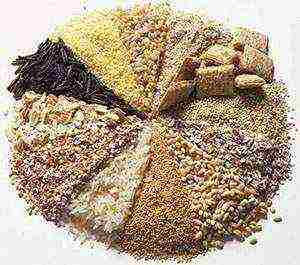 If piglets are purchased from other farms, they must be quarantined before the herd is formed. It is necessary to budget for the vaccination of the herd at each stage of development. Without a certificate of veterinary control of the livestock, the legal sale of meat will be impossible.
If piglets are purchased from other farms, they must be quarantined before the herd is formed. It is necessary to budget for the vaccination of the herd at each stage of development. Without a certificate of veterinary control of the livestock, the legal sale of meat will be impossible.
The current cost item will be the purchase of special feed for pigs, premixes and vitamin complexes. However, feed is much cheaper than meat. The cost of production is traditionally high. And if the growing technology is observed, the business risk is minimized, but this cost item needs to be planned.
With a large number of pigs, dry feeding is preferable. The increased feed costs will pay off with a greater weight gain and lower costs for fattening. At the same time, it is important to provide animals with water at 6-8 liters per head per day.
The income part takes into account that one sow can give up to 14 piglets, whose fattening will provide up to 3 tons of marketable products. Distribute profits by timing of product receipt. If the resulting balance does not give the expected profit, the business plan for breeding pigs needs to be optimized. That is, find cheaper feed or suckers. Successful pig breeders in a backyard receive up to 1000% of the profit in 2-3 years.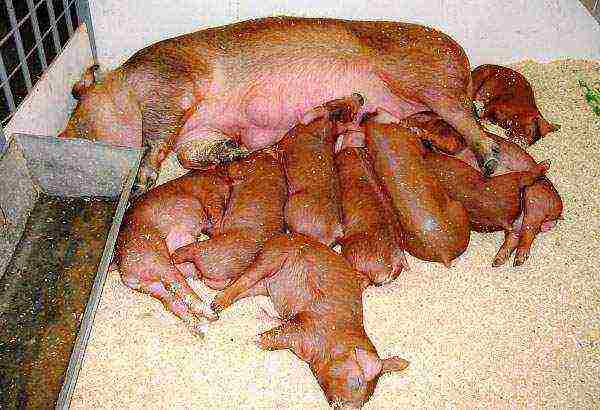
In order for raising pigs at home, as a business, to be successful, the following rules should be followed:
- observe hygienic conditions for keeping pigs;
- do not miss the time for the castration of pigs;
- to carry out preventive measures against diseases and avitaminosis of the livestock;
- observe the time and frequency of feeding animals, ensure constant access to water.
It is impossible to feed feed with mold and signs of acidification of liquid feed. Feeders should be periodically treated with boiling water.
When buying offspring from thoroughbred pigs, you need to know about the structural features of animals. You can get pork with a predominance of lard, bacon or meat from a particular breed.
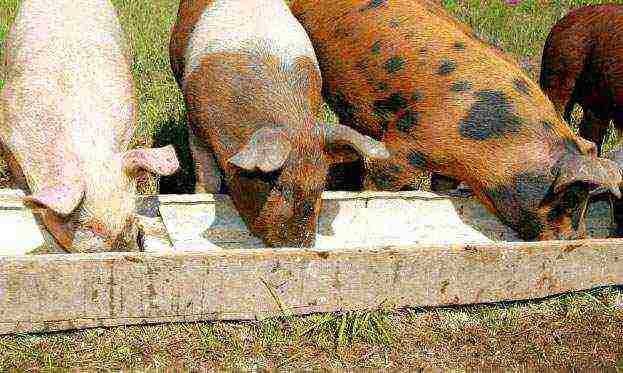 Is it profitable to keep pigs? There is no other way to provide a family with meat at cost. To organize a business with a small number of heads, the sale of meat will take place without going to trading floors. Neighbors will become buyers. Livestock products are always in steady demand.
Is it profitable to keep pigs? There is no other way to provide a family with meat at cost. To organize a business with a small number of heads, the sale of meat will take place without going to trading floors. Neighbors will become buyers. Livestock products are always in steady demand.
Agricultural revolution - video
Part 1
Part 2
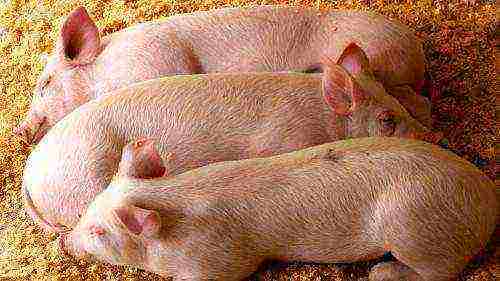
The lack of significant capital investments and stable profits make pig breeding at home for beginners a very popular activity.
The demand for pork is consistently high, so many people want to try to breed these artiodactyls to get not only fresh meat, but also to earn money.
Is it profitable to keep pigs, where to start breeding, how to care for them and what is generally needed for this? We will help you sort out these and many other questions.
How to equip a pigsty
How to start breeding pigs? Of course, from the search for a suitable room in which you need to create conditions. Especially responsibly you need to approach this matter if you plan to breed pigs for sale in the future.
Room planning
The walls of a pigsty, in which it is planned to raise pigs for meat or sell live weight, should be made of non-moisture-consuming and heat-insulating materials that will keep warm in winter.
Building materials such as:
- wood;
- brick;
- porous gas blocks;
- cinder blocks;
- rubble stone.
The inside of the wall can be plastered and whitewashed or planked. A suitable microclimatic environment for keeping the pigs must be maintained in the pigsty. The attic must be insulated, and the floors can be filled with concrete or assembled from planks. In the outer walls, we need manholes with dimensions of 70x70 cm, through which animals can get to the outdoor area for walking.
Conditions of detention
The hardest part is raising young pigs, which need more comfortable conditions.Purchased piglets need to be left in a quarantine room for a week to identify sick individuals in the early stages of development.
Young animals need to be grown at an ambient temperature of 18-22 degrees and humidity above 70-80%.
Piglets need to be kept in warm rooms free from dampness and drafts so that they can get stronger.
The pig house should be kept clean and the animals should be allowed to walk outside. Change the water as often as possible, and clean the troughs after each feed. The pigsty requires disinfection treatment every month.
Pigsty lighting
The correct technology for raising pigs involves providing sufficient natural light indoors. Sunlight has a beneficial effect on the development of individuals. During the winter months, when daylight hours are shortened, artificial lighting is required.
Lactating females need lighting for 18 hours a day at an illumination level of about 15 lux, while fattening females require lighting of 5-6 lux for 12 hours.
Ventilation of the room
In the pigsty, you need to equip a ventilation system that will remove the processed air from the room, and instead drive in fresh air from the street.
Keeping pigs on a small scale is possible with a home-made ventilation system, and for breeding on a larger scale, industrial equipment will be required.
The main thing is not to forgetthat drafts are dangerous for piglets and young animals, therefore ventilation should not be too powerful. Optimal conditions for growing pigs are created with an air handling unit with performance regulation.
Which breed is better
To organize a home farm, you need not only to study and comply with the conditions for breeding pigs, but also to buy suitable livestock. All domestic pigs are divided into three categories, depending on the meat:
- Bacon... Their meat contains the most layers of fat, but there is no layer of fat.
- Greasy meat... They have premium lard, but also eat meat.
- Meat-greasy... Mainly meat is obtained from them.
In Russia, about three dozen breeds of different categories are in demand, and among themselves they differ in terms of cultivation, meat quality and weight. When determining the breed of pigs in the backyard, be guided not by the specifics, but by the market demand in the region:
- Large white. This breed was brought from England, but our selectors have made a significant contribution to the current appearance of animals. Competent breeding of white pigs allows individuals to gain 100 kg of weight in 7 months, and the mass of adult boars reaches 350 kg and females up to 250 kg. The breed is classified as meat-greasy.
- In the bacon category, the most popular breed in the Russian Federation is the breed called Landrace. Animals gain a hundred kilograms in about six months, and the maximum weight is 300 kg for males and 220 for females.
- It is difficult to single out the most popular breed among the lard-meat, since there are many of them. Among them is a large black one. Pigs gain a centner in 6-7 months, reaching a maximum weight of 310 kg for boars and 215 kg for sows.
If you are interested in raising pigs for the purpose of obtaining dietary meat, pay attention to the Pietrain breed. Such pork contains less fat, and the animals themselves do not require any special care.
How to feed pigs
How to feed pigs for rapid growth - this question is asked by all beginners. If pig breeding is a business for you, it is better not to save on feed. A balanced diet is the main factor affecting the weight gain of individuals, and the taste of meat also depends on the quality of the feed.
There are three categories of food in total, but we recommend using the first and second, or a combination of them.
It is not recommended to fatten with fodder of the third category, otherwise the meat will lose its taste. You can add it to the diet in rare cases, and exclude it altogether 2-3 months before slaughter. The feeds differ in composition among themselves:
- Category I feeds are wheat, barley, rye, beans, peas, carrots and beets.
- Category II includes alfalfa, clover and other herbs.
- The III category of feed consists of potatoes, corn, wheat bran, beet molasses, buckwheat, etc.
More green fodder promotes meat build-up, while root crops, corn and barley increase the fat layer. Thus, everyone decides for himself what is the best way to feed the pigs.
How and when to feed
From 1.5-2 months, the piglet is ready for intensive fattening. During the first 6-8 months, each of them should gain 100-120 kg. For each individual, about 400 kg of feed will be spent for this. The peculiarities of pig breeding require feeding the piglets five times a day up to 3-4 months, after which they switch to four meals a day. The main thing after feeding is to clean the feeders from food debris.
Pigs are considered omnivores, but the quality of the feed used will affect the meat, so we do not recommend feeding them table leftovers.
You need to include in the diet vegetables with fruits, a variety of grains and root crops. Additionally, you need to buy feed containing valuable trace elements.
Piglets up to 4-5 months are fed with boiled root crops with the addition of ground wheat and herbs (legume tops, nettles). Milk whey is mixed into the feed, and from the additives, 10 g of salt per day and a spoonful of ferrous sulfate are recommended (dissolve 2.5 g in 1 liter of water).
From the eighth month, animals are fattening, therefore it is recommended to add more legumes, fatty waste and zucchini to the diet, and the daily dose of salt is increased to 40 g.
Large-scale breeding of pigs per tribe will increase income if you grow feed yourself, and it is more profitable to buy ready-made food on small pig farms.
Features of keeping pigs in winter
The care and breeding of pigs in winter has certain characteristics that you should be aware of. To prevent the animals from freezing and getting sick, the premises need to be insulated and heated. It is recommended to drink them with warm water, and the feeding method is also different. Due to the lack of seasonal greens, more food waste, compound feed and bran should be added to the diet, also not forgetting about salt.
Often novice farm owners are interested in how to feed pigs to grow better?
Experts recommend in the warm season, harvest nettles and dry them for the winter. It is useful and nutritious for animals, especially in the cold season with a lack of vitamins.
Breeding pigs
Now let's find out, is it profitable to breed pigs for sale? It all depends on the seriousness of your approach. If you learn how to breed animals correctly, it will turn into a fairly profitable business. Physiological maturity in females occurs at 8-9 months, and at 11-14 the first offspring is possible. To be good, you need a sow weighing more than 100 kg, with at least 12 formed teats.
For one farrowing, the female brings up to 14 piglets (depending on the breed), and each of them is your profit. Whether this is a profitable business will depend on the demand and average prices for the breed being bred in a particular region.
To prepare the sow for gestation, enrich the diet with milk waste, lush green grass and compound feed. Use hay instead of green in winter.... When the pig becomes restless, refuses food and grunts characteristically, this indicates the onset of sexual heat.
After 10-12 hours, you need to organize mating with a boar or carry out artificial insemination, and after the same time interval, repeat the procedure. After 17 days, you need to observe the female. If the symptoms of sexual heat recur, the sow is not fertilized, but the process must be repeated (it is better to choose a different boar). We told you how to breed pigs, but this is not the most difficult thing in breeding them.
How to care for new piglets
Piglets that are born require special attention.What is needed here is not the usual care of pigs, but more reverent and attentive. The nursing female also needs extra attention. After farrowing, you need to give her a liter of water, and after another six hours, completely satisfy her need for fluid.
On the first day, the female needs to be given a liquid mixture of wheat bran or oat flour, and after a week, root vegetables should be introduced into the diet - they will ensure the flow of milk. After farrowing, you will have to give food to the pig three times during the day at regular intervals.
As for the piglets, each of them after farrowing needs to be wiped off, rinsed with patches, ears and mouth, processed a cut of the umbilical cord and burned with iodine.
Pig breeding is serious business. An important role is played by the obligatory establishment of contact between the piglets and the mother during the first 45 minutes (you need to bring each of them to the nipples). If this is not done, the female will not accept them.
Calculating the profitability of pig breeding
Now let's find out whether it is profitable to keep pigs for sale and how much does it cost to raise a pig? To calculate the profitability, let's take a small pig farm of 50 heads.
Each pig costs about $ 40, which means that it will take $ 2,000 in total. Each individual will need 100 kg of compound feed and 180 kg of grain annually, that is, you will spend $ 170-200 per month on feed. In part, the profitability of raising pigs depends on the quality of the feed, so do not save too much.
In about six months, the pigs will gain almost 100 kg. With 50 heads, you can leave 3-4 for breeding, and sell the rest for meat. With them, you will receive a profit of about 10-15 thousand dollars.
At first glance, the breeding of pigs as a business seems to be a very profitable business, but take into account the costs of salary to working personnel, utilities, purchase of equipment and feed, and as a result, one pig will have a net profit of 750-800 rubles per month.
With all this in mind, decide for yourself whether a pig breeding business is profitable or not.
Did you like the article? Share with your friends:


